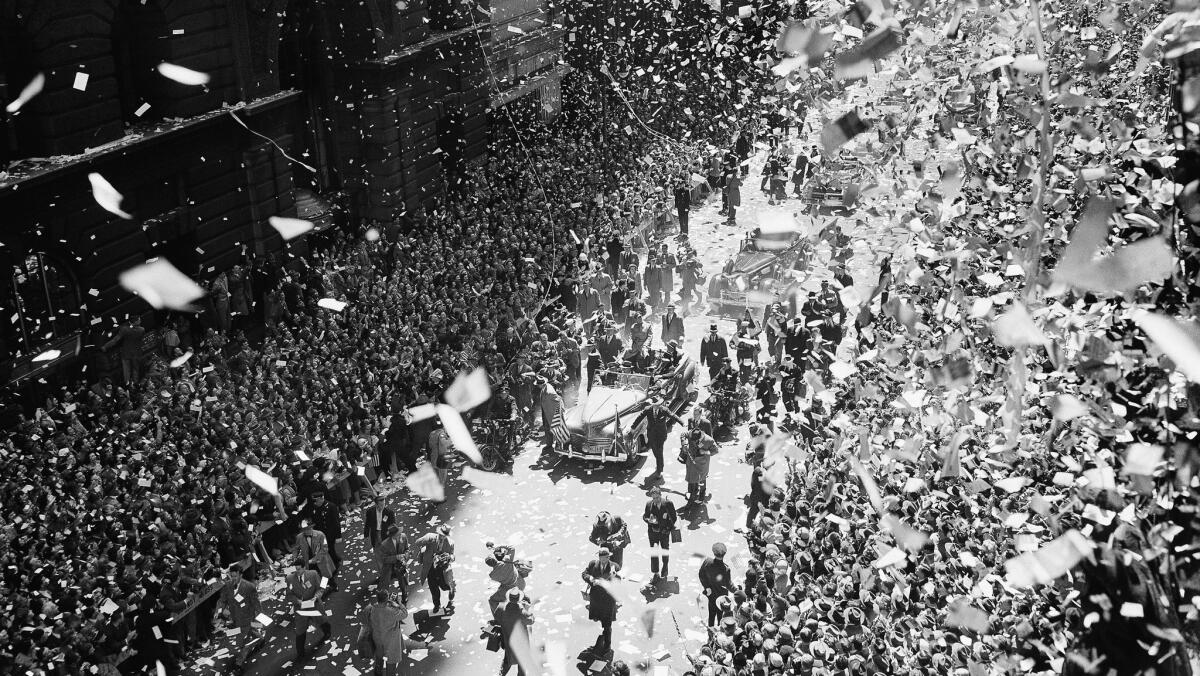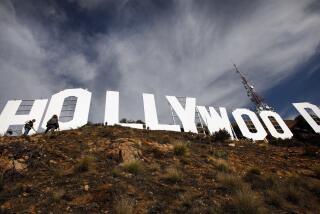It was the biggest ever — give or take a million. Here’s why you should be skeptical when it comes to counting crowds

He was an outspoken five-star general, a top commander in both World War II and the Korean War, and beloved by both the military and the public.
So beloved was Douglas MacArthur that when he returned from Korea in 1951, having just been dismissed by President Truman, attendance at a parade in his honor reached 7.5 million.
That was the estimate from New York officials, and the number has been widely repeated in historical accounts.
It is also probably wrong.
The population of the city at the time was 7.8 million. It seems impossible that most of New York’s residents would have fit into a mile-long stretch in lower Manhattan. The city officials may have been a little too caught up in the moment.
“That’s a wonderful example of civic pride inflating an estimate,” said Steve Doig, a data journalism professor at Arizona State University who specializes in crowd counting. “That’s what happens with these kinds of events.”
The issue of crowd size took center stage over the weekend as President Trump took issue with news outlets reporting that his inauguration drew fewer people than that of President Obama in 2009.
That was obvious. Side-by-side aerial photos of both events clearly showed more people on the National Mall eight years ago. The observation was also backed up by data on Washington train ridership the mornings of both inaugurations: There were 193,000 riders this year, compared with 513,000 in 2009, according to the Washington Metropolitan Area Transit Authority.
But exactly how many people watched the inauguration in person is difficult to say.
Estimating crowd size is an inexact science at best. Taking aerial photographs with drones, dividing the images into quadrants and hand-counting people is the most reliable methodology, but clouds, blurry colors and looming shadows can get in the way.
“You absolutely need aerial access to a venue to get somewhat of an exact estimate,” said Curt Westergard, president of Digital Design & Imaging Service Inc., which has used balloons to carry cameras into the sky to estimate crowd sizes along the National Mall and elsewhere.
“Our goal is never to have finite number, but a rough magnitude of range,” said Westergard, whose team plans to soon release estimates on the size of the Women’s March on Washington, held the day after the inauguration.
Attendance at that march and the dozens held simultaneously around the country was also the source of disagreements.
The website FiveThirtyEight.com found 11 cities where crowd sizes given by organizers differed from those made by local officials. In New York, event organizers said there were 600,000 marchers, while public officials put the number at 400,000. In Portland, Ore., organizers estimated 100,000 marchers showed up — 30,000 more than the total estimated by the city.
Some agencies and jurisdictions have wondered whether all of the controversy is worth the trouble of making estimates.
When the Nation of Islam organized the Million Man March on Washington in 1995, calling on black men to rally for equal rights, the group announced that 2 million people had attended. But the National Park Service used aerial photos to put the number at 400,000 — drawing strong criticism from the Nation of Islam.
Meanwhile, the Center for Remote Sensing at Boston University adopted a methodology used to count sand dunes in the desert and came up a range of 670,000 to 1 million.
In the aftermath of the dispute, the park service instituted a new policy to stop tallying crowds on the National Mall or anywhere else.
In Los Angeles, the Police Department has been reluctant to announce estimates since a 2006 dispute over crowd sizes at immigration marches protesting federal immigration bills. Activists said 1.3 million people attended a downtown rally, but police said there were 500,000.
“We generally avoid providing crowd estimates to enable the organizers to provide the crowd estimates of their events,” said Los Angeles Police Capt. Andy Neiman.
Perhaps a more important question than the size of a crowd is why that number seems to matter so much.
“This was the largest audience to ever witness an inauguration, period,” Sean Spicer, Trump’s press secretary, defiantly told reporters Saturday, drawing widespread ridicule on the Internet and the talk-show circuit.
When he announced his candidacy in June 2015, Trump boasted about the size and support of the crowd gathered in the lobby of Trump Tower. Later it was revealed that he had paid actors to attend and cheer at his announcement.
The boasting continued throughout the campaign, as Trump assailed television networks whenever he felt their images didn’t show the true size of his audiences.
“Size has always been taken as a metric of popularity, whether the crowd is for a political rally, a protest march, a Super Bowl parade,” said Doig, the journalism professor.
“The big problem of inflating crowd estimates is that the inflation creates pressure for the next crowd to be even bigger, until it can reach the point of being patently ridiculous,” he said.
That Trump lost the popular vote to Hillary Clinton by 2.9 million ballots may help explain why he seems to have such a strong interest in persuading people that his inauguration crowd was the biggest.
In politics, crowd size can also mean more donors.
“It’s an indicator of enthusiasm, which can lead to even more enthusiasm and support and fundraising,” said Steve Schmidt, a Republican political strategist.
“Exaggerating crowd size is a time-honored tradition, used by politicians, musicians, you name it,” Schmidt said. “But the practice also comes with a reality. If there are 10,000 people at your event, you say 12,500 — not 125,000 like some. C’mon.”
For all the difficulty Trump and his aides seemed to be having coming to grips with the Inauguration Day numbers, it’s not clear that they needed to exaggerate to be impressive.
“The sad thing about this controversy,” Doig said, “is that President Trump actually drew a big crowd of several hundred thousand people on a cold and rainy day.”
Twitter: @kurtisalee
Times staff writer Richard Winton contributed to this report.
ALSO
How celebrities at the Women’s March say they’ll reflect the change they want to see in America
Trump loathing unifies the diverse crowd at the massive L.A. women’s march
Watch again: Women’s March on Washington
More to Read
Start your day right
Sign up for Essential California for news, features and recommendations from the L.A. Times and beyond in your inbox six days a week.
You may occasionally receive promotional content from the Los Angeles Times.







